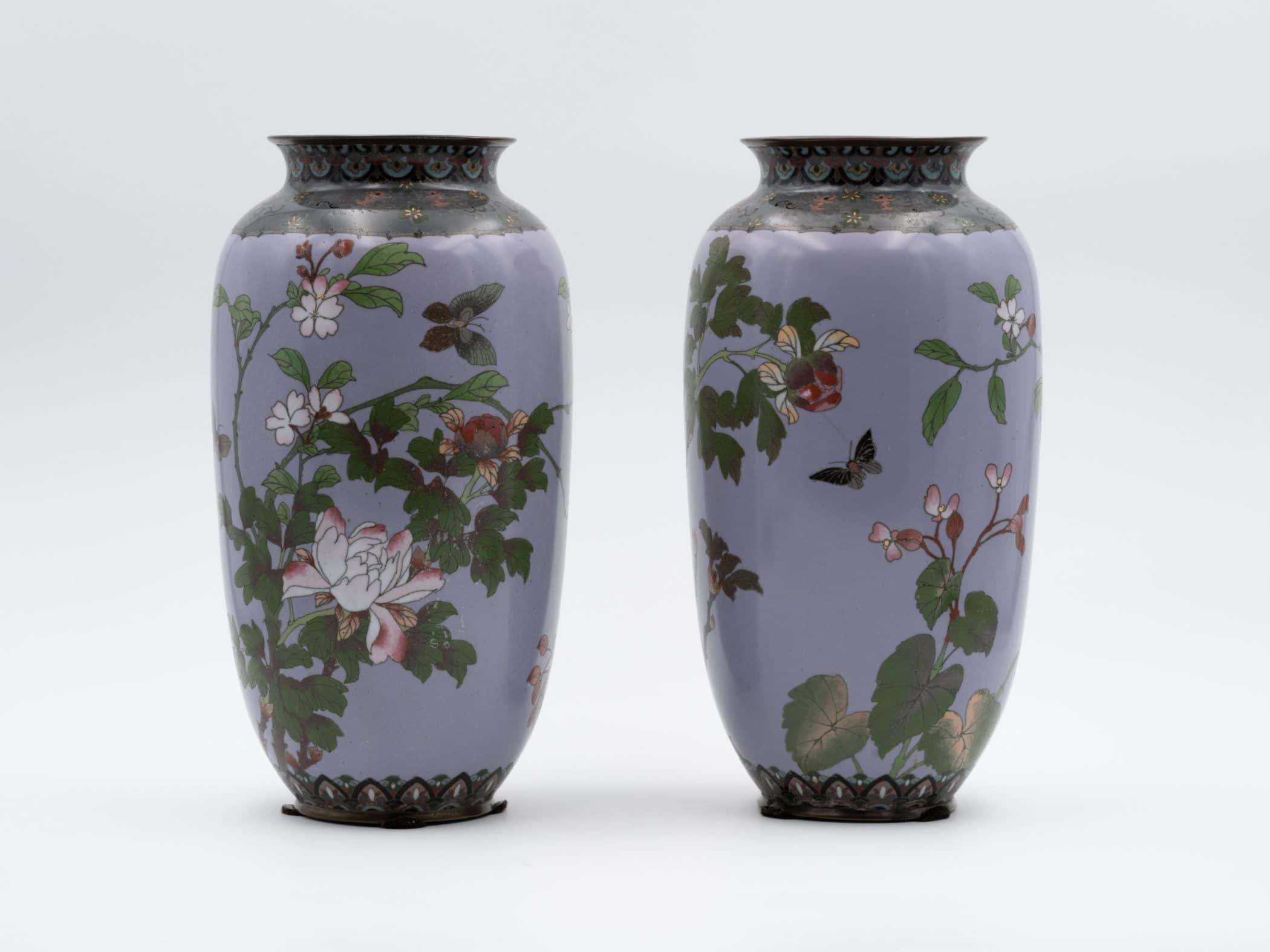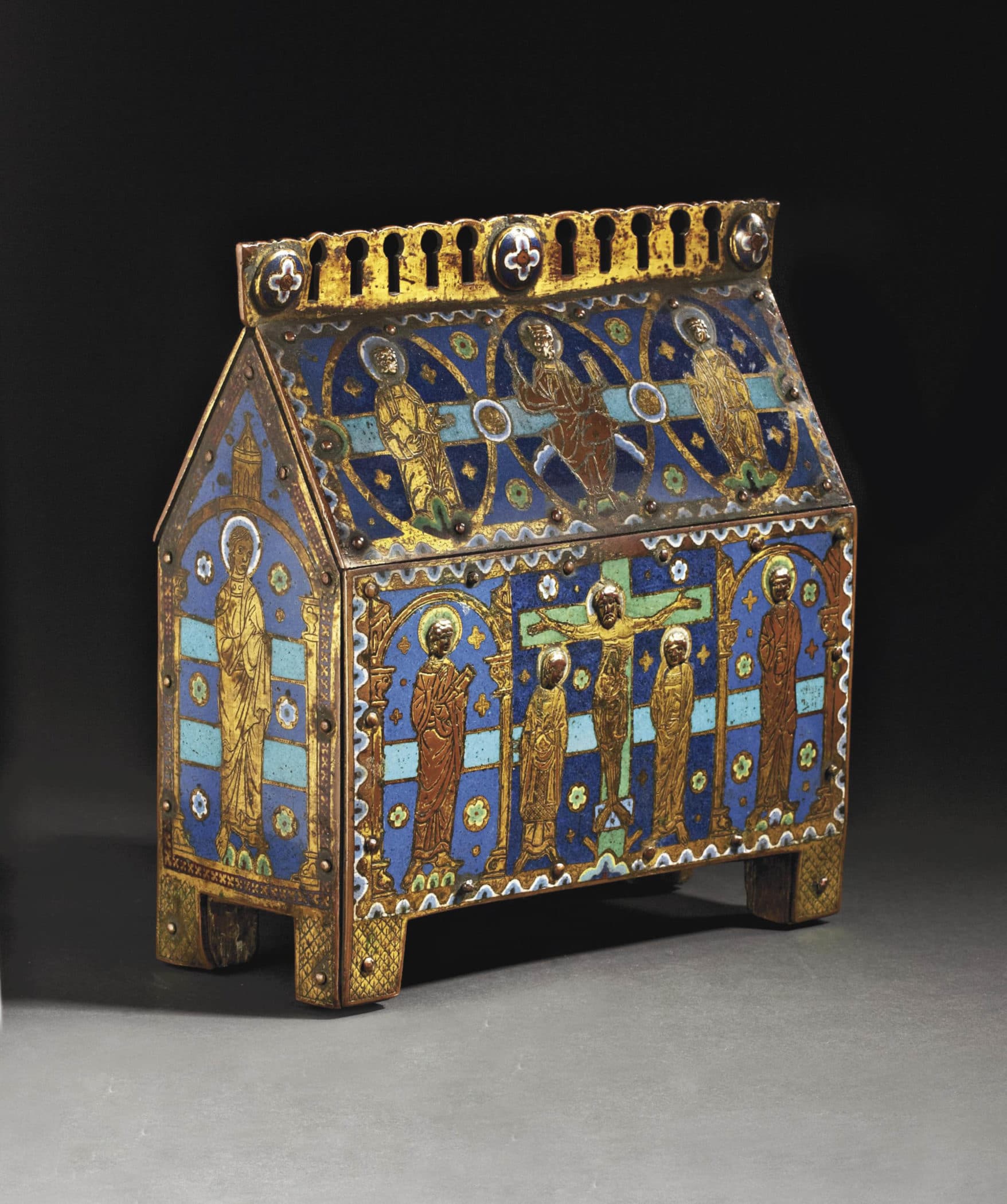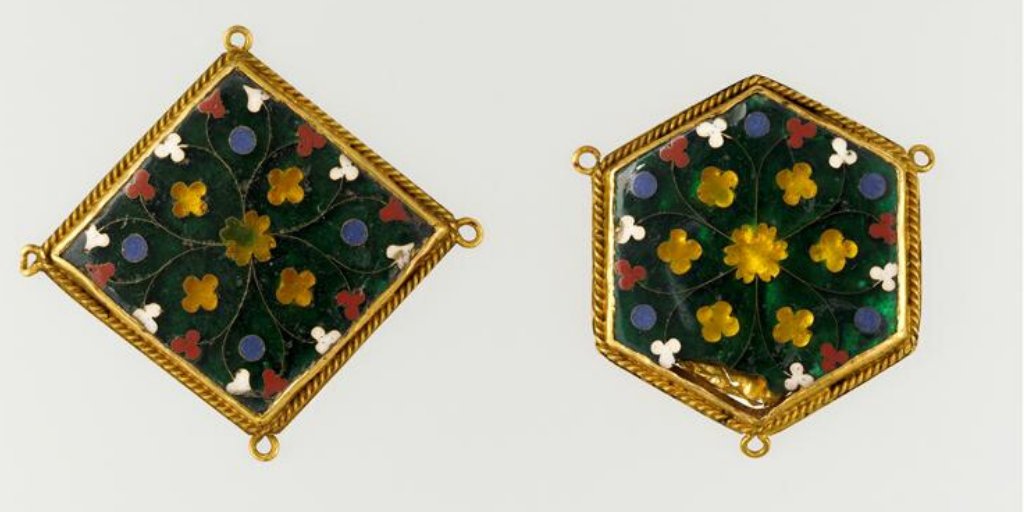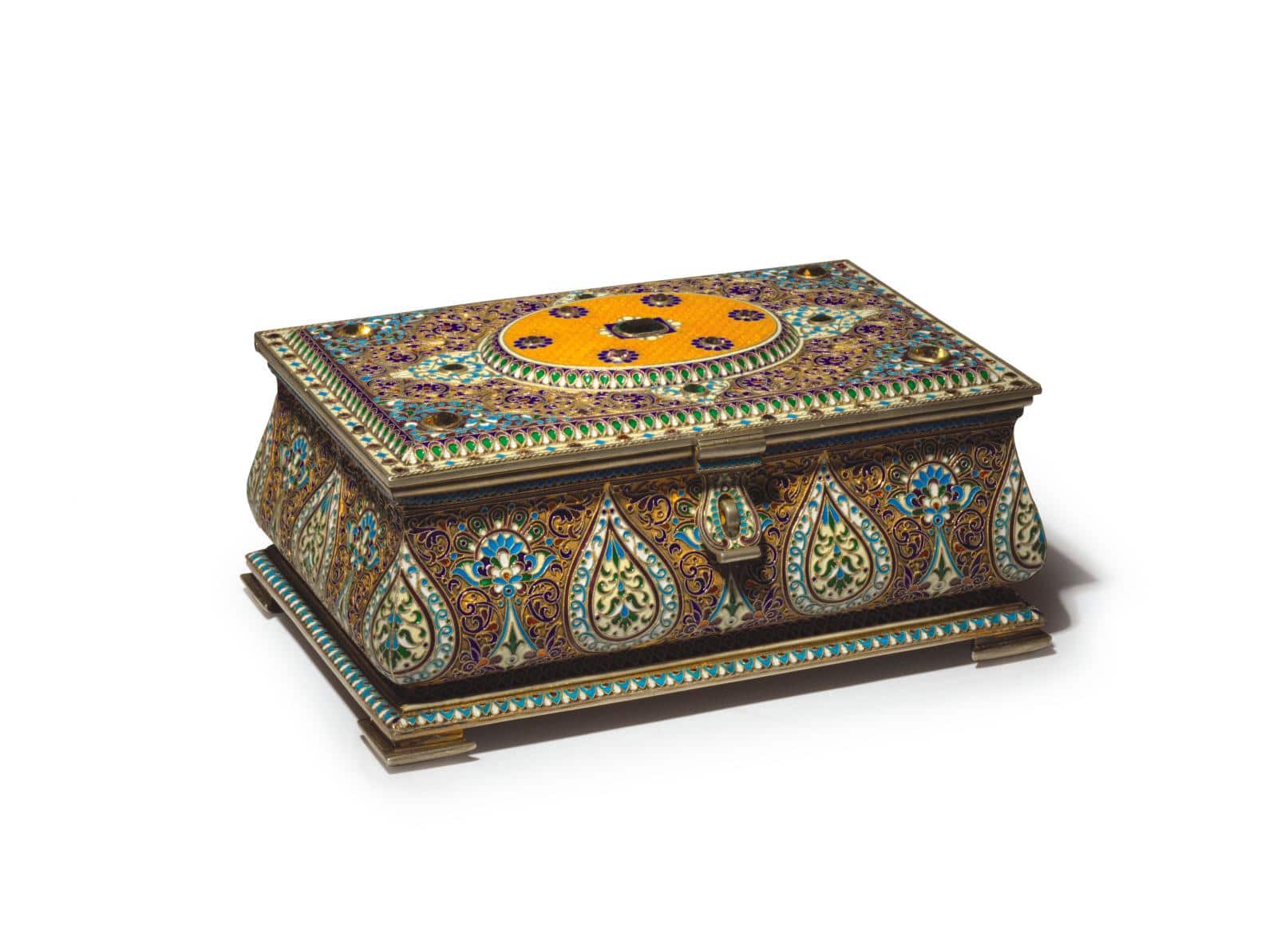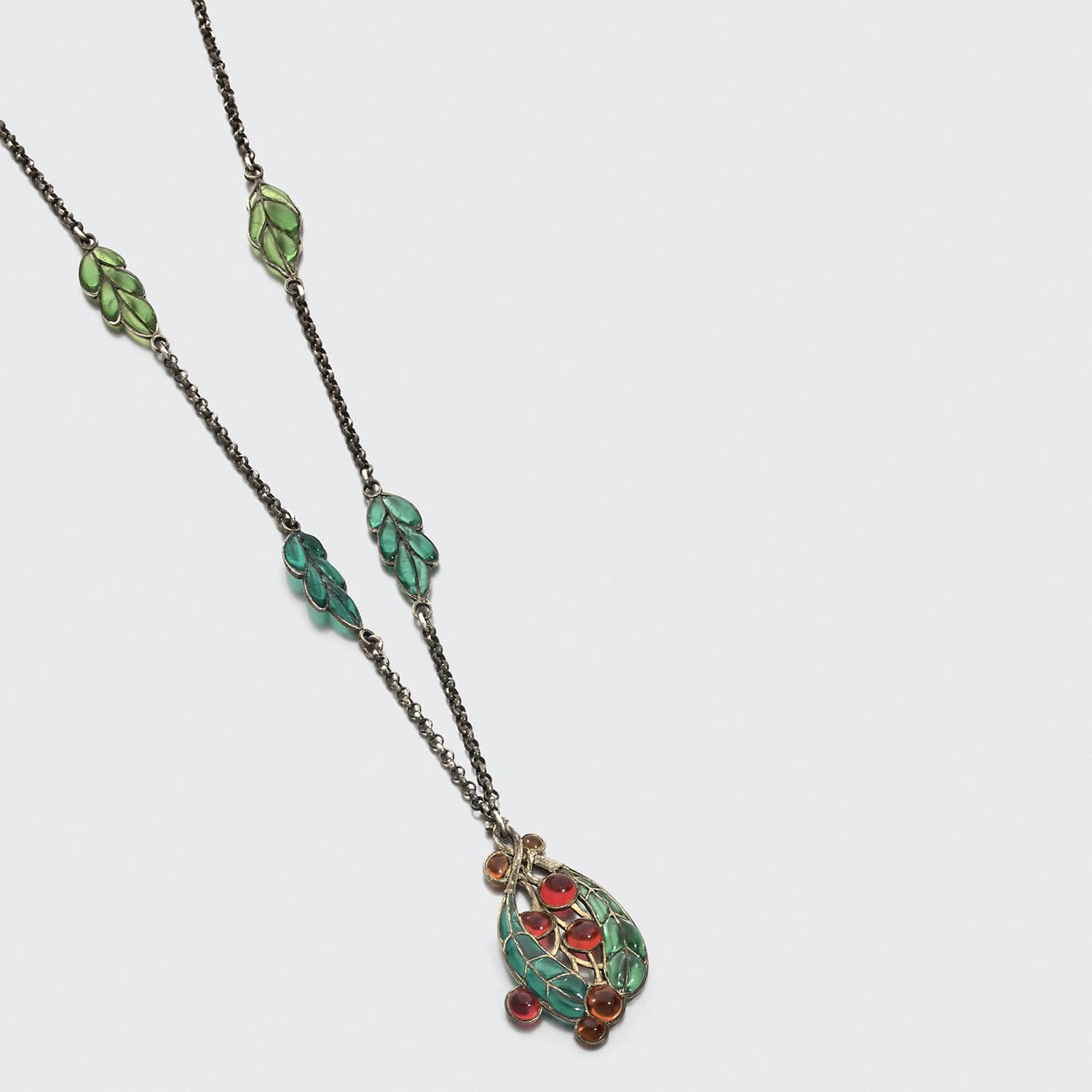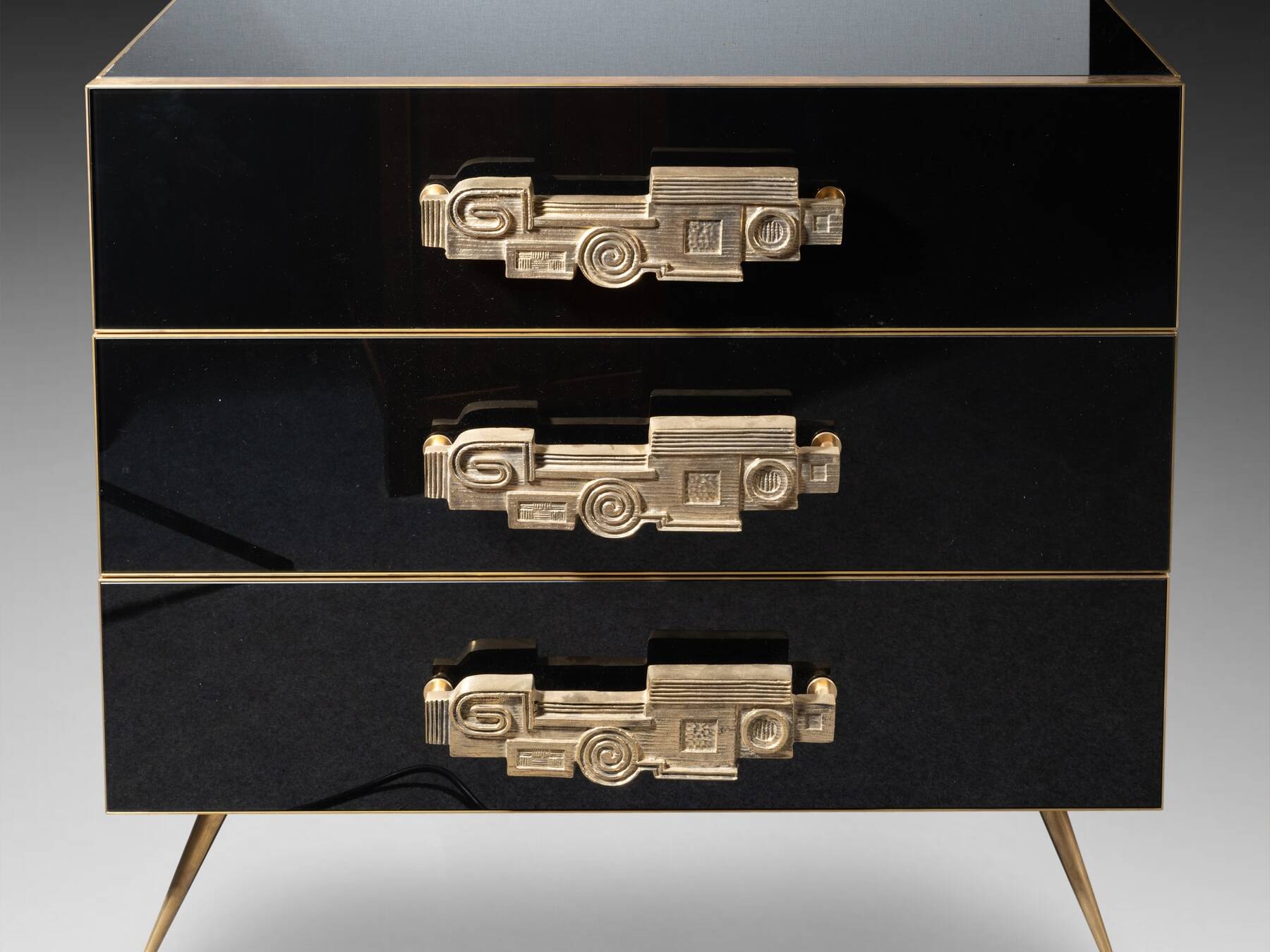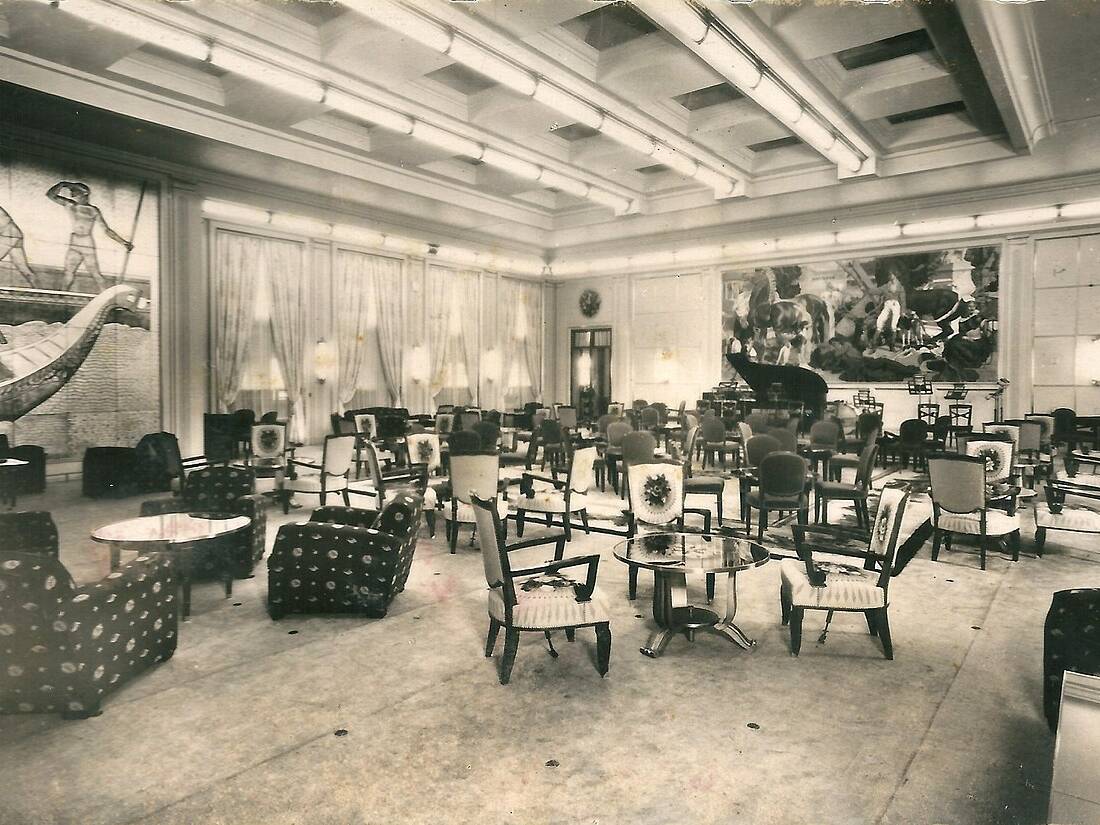Amazed by the Byzantine productions, the medieval West explored and perfected from the 6th century a fascinating cloisonné enamel, the only one capable of competing with goldsmith’s precious stones. The delicate and frugal technique reveals vibrant colours with sumptuous decorative effects without having to sacrifice a fortune! The goldsmith engraves his motif on a copper, gold or silver plate, taking care to raise the edges. Then he welds thin metal ribbons on the contours of his pattern to delimit the cells. Once this support has been prepared, the glass frit (the flux) must be melted and then coloured with metal oxides until a rich palette of opaque or translucent enamels is obtained. The enameller only has to pour these enamels into the cells of his motif and put his plate in the oven. Heat-liquefied glazes solidify with the metal as they cool. A thin layer of flux is applied to protect the metal from oxidation and then the whole thing is polished to make the surface as smooth and shiny as a fine stone.
Unique know-how
The Limousin naturally possessed all the qualities to produce the most beautiful enamels, its earth producing all the indispensable elements, from metal oxides to sand for glass, to precious metals. Prolific monastic workshops thus raised this region to the highest level of Western enamelling for several centuries. Without doubt, Conques Abbey drew on the learned techniques of the Limousin region when it singled out its production of partitioned walls in the 12th century. The Aveyron technique superimposes on a support a second plate with an openwork pattern. The cavities formed by the superimposition of the supports are enriched with thin metal strips, as in stained glass. The resulting cloisonné is, for the time, of a rare and astonishing cleanliness. Then in the 13th century, several households in the Rhine Valley and Meuse rivalled each other in talent and willingly combined cloisonné and champlevé enamels. They were known to have in common an elegant cold palette which made them successful.
However, it was in the Paris of the 14th century that cloisonné enamel attained an unequalled refinement of luxury and delicacy. Playing on the opposition of translucent and opaque enamel, these luminous Parisian gold-bottomed pieces are of such complexity that they will be baptized: these so-called plique enamels borrow from the term “complicated”. Probably these bright little jewels, no more than 8 cm in size, were sewn onto the clothes. Their motifs are trefoils, hearts and circles surrounded by gold partitions and coloured with dazzling enamels. The translucent palette stretches from pink to red and enjoys a dazzling yellow. Opaque enamels – often delimiting the frame – prefer white, brick red, ochre yellow and cobalt blue. This subtle decoration is most often anchored in a translucent emerald green enamel background that has nothing to envy the purest jewels.
The revival of cloisonné enamel
In the 14th century, cloisonné enamel appeared in China, where the most precious pieces were created during the Ming Dynasty (1368 – 1644), at the end of which the technique reached Japan. Like its neighbour, the latter used bronze and brass supports, replaced around 1880 by copper and white metal, while vegetable glue was sometimes preferred to welding to lighten the parts of a production largely intended for export. For if the West turns away from European enamels in modern times, it is as if bewitched by Asian enamels. This disdain is readily forgiven, since the cloisonné was resurrected in the second half of the 19th century.
Like medieval enamels in their time, these precious European creations are intended to compete with gems and jewels. Russian and Scandinavian enamellers then excelled in this field. The Norwegians Jacob Tostrup (1806 – 1890) and David Andersen (1843 – 1901) as well as the Russians Ian Khlebnikov (1819 – 1881) or Pavel Ovchinnikov (1830 – 1888) worked for the European nobility and Antip Kuzmichev (1856 – 1917) supplied the house Tiffany. They all produce the most luxurious crockery and artwork in an opulent and colourful style. Their cloisonné enamels are enriched with guilloché supports or decorated with straws reminiscent of organza. The once carefully delineated colours are displayed in brilliant monochrome. Pierre-Karl Fabergé (1846 – 1920) explored all the techniques of cloisonné with prodigious virtuosity, while in France, Armand Riffault (1832 – 1872), Eugène Feuillâtre (1870 – 1916), Etienne Tourette (before 1875 – 1924) and André Thesmar (1843 – 1912) were the talented enamellers of a reborn jewellery industry.
René Lalique (1860 – 1945), leader of Art Nouveau cloisonné enamel, pushed the limits of an arduous but nevertheless exquisite variant of plique enamel. In this technique known as plique-up, the craftsman makes a cloisonné enamel without metal support to form like an enamelled stained glass window. There are three ways to achieve this feat. The Russian way reproduces the desired pattern by interlacing gold or silver threads on a metal core. The resulting grid is welded, removed from its core and then cleaned with acid to obtain a bright white metal. The alveoli formed are enamelled by capillary action and then the whole is baked in an oven. The western way replaces the Russian grid by a piece of metal cut with bocfil, then enamelled by capillary action. Finally, the Japanese way covers a metal support with several layers of flux on which are placed thin partitions. A conventional enamelling is then carried out, which is protected by a layer of varnish resistant to the acid bath in which the part is finally immersed. The support is dissolved, the stained glass enamel appears. Plique-updated enamels are a fragile feat that make pieces prior to the 19th century coveted rarities.
Marielle Brie
Art Historian for Art Market and Cultural Media
Author of the blog Objets d’Art et d’Histoire
Autres ressources et documentations
28 June 2025
Plaster Sculptures, Plaster Casts
For a long time, plaster casts suffered from a poor reputation. Often regarded as crude replicas, and sometimes even dismissed as inexpensive imitations, they nonetheless had…
17 April 2025
The Middle-Ages Furniture
Rare and highly sought-after, Middle-Ages furniture is making a strong comeback. An overview of this market, where enlisting the guidance of a professional is strongly advisable.
18 March 2025
Murano Glass Furniture
Since the beginning of the 20th century, Murano glassmakers have been exploring new horizons. After classic lighting and decorative art, Murano glass is now used to adorn…
16 December 2024
A bronze triton after the sculptures of François Girardon (1628 – 1715) in Versailles
This fountain element is all the more admirable as it is sculpted after the masterpieces of the Pyramid Basin, on the parterre of the North Wing of the Versailles gardens.
18 November 2024
Tyco Bookcase, by Manfredo Massironi, for Nikol International
A pure creation of optical art research in the 1960s, the Tyco library shelf designed by Manfredo Massironi invites the viewer to bring the work of art to life on a daily basis.
3 August 2024
The Ocean Liner Style
In the 20th century, the immense ocean liners connecting the Old Continent and the New World were ambassadors of tastes and innovations on both sides of the Atlantic.

